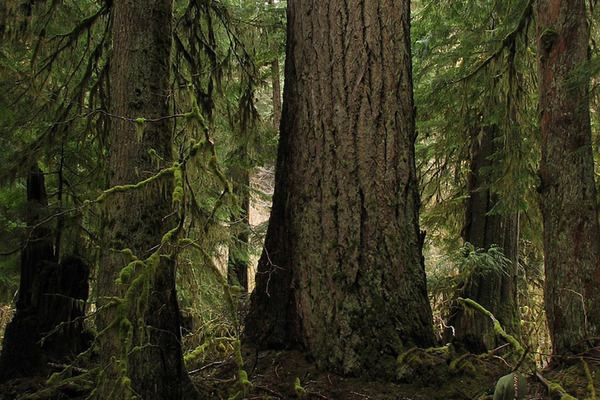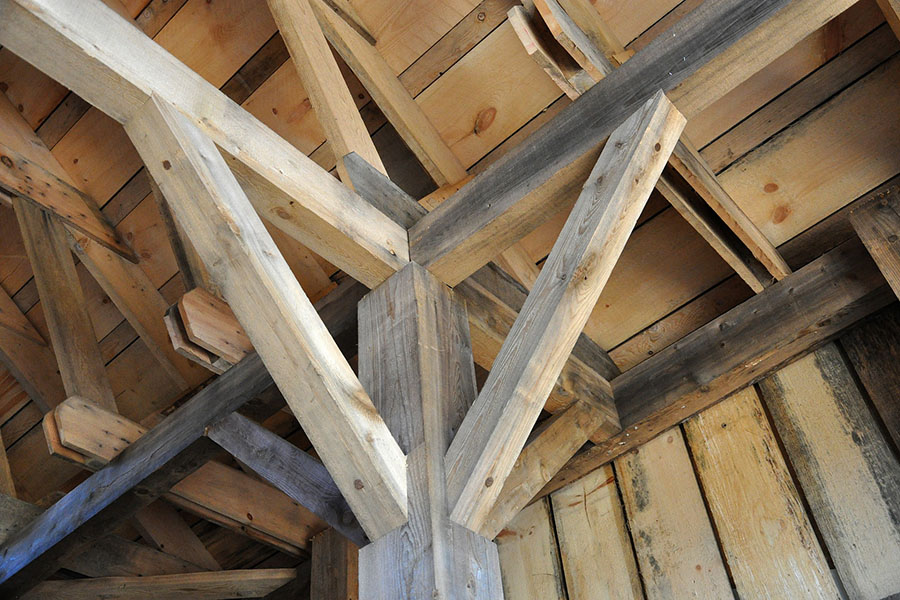Douglas Fir - the Historical Preference and Modern Choice

Douglas fir forests provide a habitat for abundant wildlife, including the highest average bird counts in North American forests. This presence and abundance within Douglas fir habitat is highly dependent on the climate, moisture, soil, topography, and disturbance history of each site.
In California, the Douglas fir (Pseudotsuga menziesii var. menziesii,) is found in the Klamath and Coast Ranges as far south as the Santa Cruz Mountains. The Douglas fir is also known as Coast Douglas-fir, Pacific Douglas-fir, Oregon pine, or Douglas spruce, is an evergreen native to western North America.
David Douglas was a Scottish botanist, best known as the namesake of the Douglas fir. He worked as a gardener, and explored the Scottish Highlands, North America, and Hawaii. Douglas fir is technically not a true fir (Abies genus), but is in its own genus: Pseudotsuga.
The tree itself grows to be very sizeable and yields a large amount of usable lumber and veneer for plywood. It is an incredibly valuable commercial timber, widely used in construction and building purposes. It is among the hardest and heaviest softwoods.
Douglas fir is the preference for construction and commercial use
Prior to World War Two, Douglas fir was the main construction material in many factories, warehouses, barns, and other commercial buildings. Historical North American buildings contain two regional varieties of Douglas fir, coastal and interior. Though their basic properties are similar, the lumber dimensions from coastal Douglas fir yields are twice as large than interior trees. As one of the most prolific timber producers worldwide, Douglas fir accounts for more than one quarter of all lumber created and used in the United States. This is more than any other species of lumber. Arborist Upcycle understands the value of Douglas fir and mills its wood with care to preserve its special qualities.
Is Douglas fir a better choice than pine
Fir has tight, close grain lines. Pine has broad grain lines that wind, making it far weaker than fir. The soft wood between the grain lines shrinks and expands in pine, making the wood cup or twist. For stability and strength, fir is much less prone to this warping or twisting, and much stronger than pine.
Reclaimed applications
Douglas fir has a substantial strength to weight ratio and dimensional stability that makes it a top choice for a wide range of projects. The ability of this lumber to hold nails, screws, bolts, plates, and joinery makes it an excellent choice for construction. Additionally, the colorations range from pink and yellowish orange that reddens with exposure to light. This patina makes reclaimed Douglas fir desirable for finer furniture applications.
Widely accepted reclaimed uses include the following:
Timber: Professional framers most often prefer reclaimed Douglas fir for many reasons, including its size, strength, usability, stability, and aesthetics. Timbers harvested from old growth forests, milled from the largest top quality trees, and given over a century to naturally air dry, makes Douglas fir specimens extremely stable when used in new architectural projects. Many reclaimed Douglas fir components from century old original architecture are suitable for new load bearing situations without the risk of movement and shrinkage often seen the instability of freshly cut materials.
Dimensional lumber: Reclaimed dimensional lumber (greater than 1 inch thick) is commonly made from Douglas fir. Common dimensions include 2" X 4-12", 3" X 4-13", and 4" X 6-16". This material is excellent for framing, siding, base board material and window trim for both interior and exterior applications.
Flooring: Flooring made from reclaimed Douglas fir is a desirable option for those looking for a durable and cost effective hardwood alternative.
Glulam: Beyond timber framing, Douglas fir timbers is a great alternative for glue laminated beams. Glued laminated timber is a type of structural engineered wood product comprised of layers of dimensional lumber bonded together with durable, structural adhesives that resist moisture. The result is a much more attractive natural wood look. Additionally, Douglas fir timber is a suitable replacement material when adding a faux rafter and gable appearance or laminating attractive mantles, shelves, and counter tops.
At Arbor Upcycle, espouses the creative reuse of lumber waste materials, transforming unwanted excess into new and improved materials of equal or better quality. As a philosophy and a movement, upcycling in San Francisco means carbon sequestration for our environment, historical salvage of San Francisco’s past, and a unique local lumber resource for our community.





